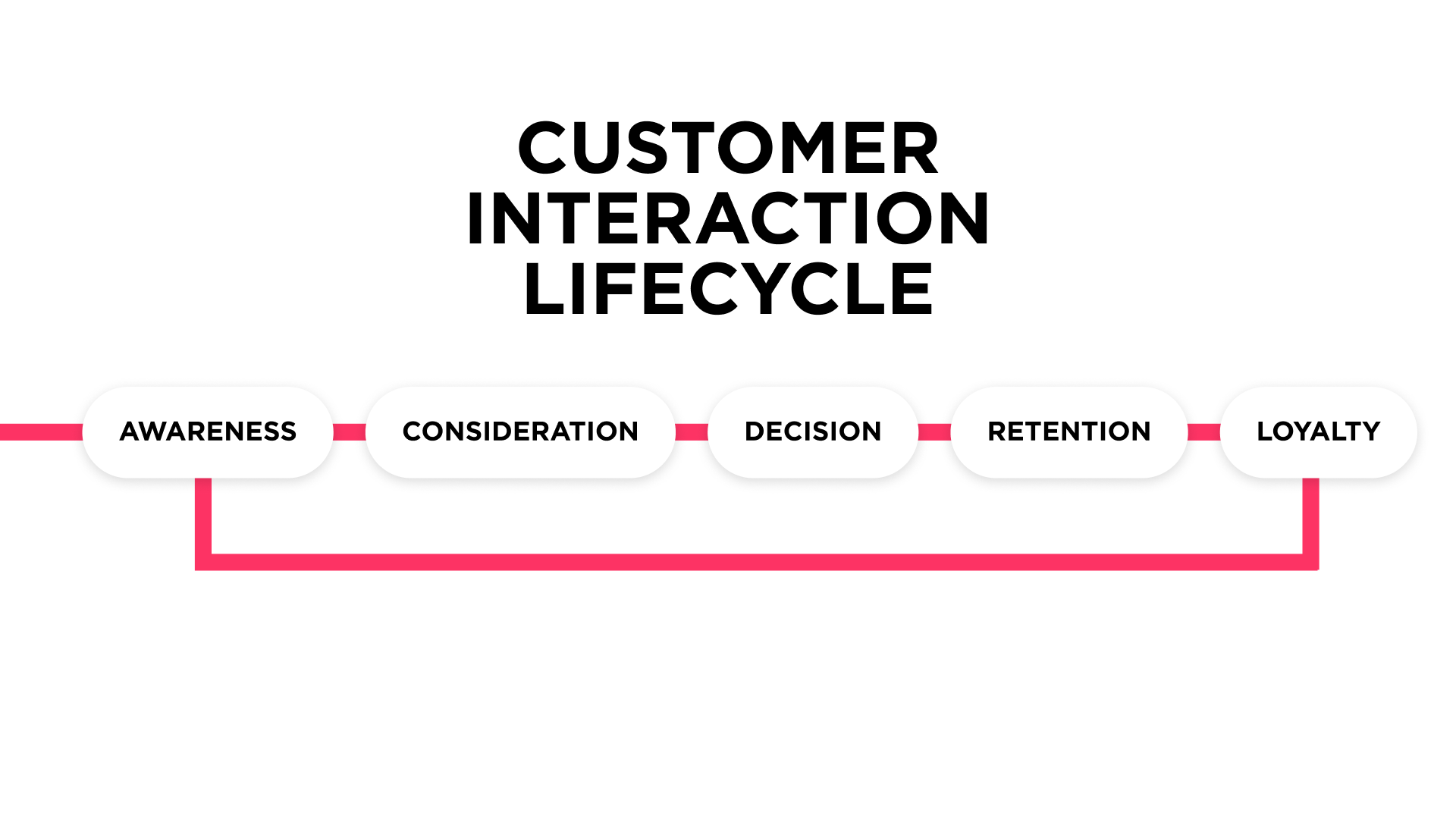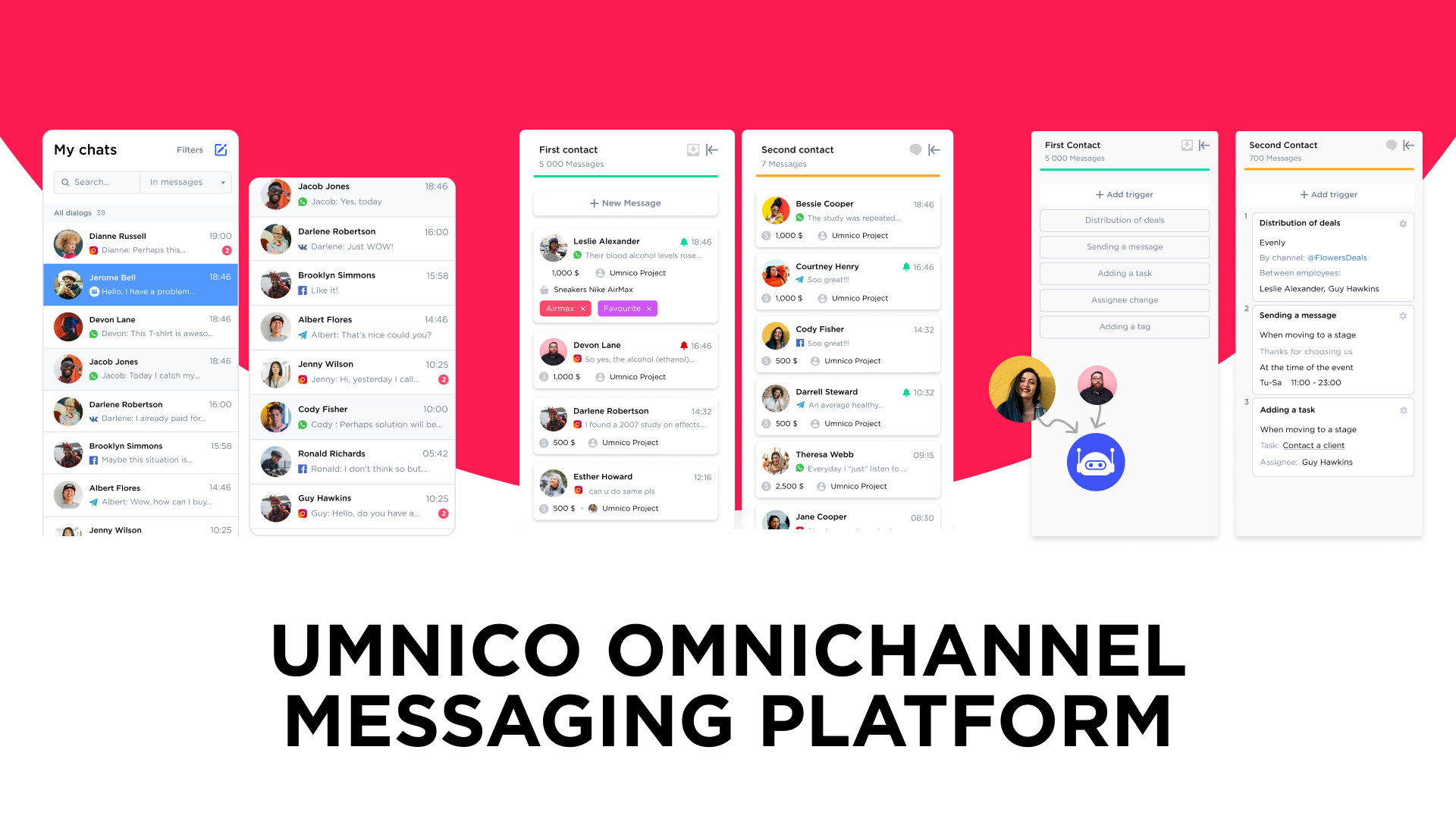Customer Interaction Management: Tips & Benefits
Dive deep into the management of client interactions.

Today, customer interaction management is more important than ever. Studies show that 74% of customers are likely to buy a product based on a positive customer experience alone, while 80% are more likely to buy when brands offer personalized customer interactions.Every touchpoint a customer has with the brand influences their perception and, ultimately, their loyalty.
In this guide, we explore the importance of customer interaction management and provide tips on how to improve it to build lasting connections with your audience and run a more efficient business.
What is customer interaction
The concept of customer interactions covers the various ways a company engages with its clients throughout their customer lifecycle.
Customer interactions can occur at different stages of the customer journey, from pre-purchase engagement to post-purchase follow-ups, and across multiple channels, from in-store walk-in to a WhatsApp chat. These interactions significantly impact sales, conversions, and long-term relationships between the customer and the brand. Each interaction shapes their perception of the brand and influences the decision-making process.
The importance of customer interactions for business
Understanding and effectively managing customer interactions is key to fostering strong relationships, enhancing satisfaction, and driving long-term loyalty. Here's how high-quality interactions can benefit your business.

Builds long-term relationships. Positive interactions foster trust and loyalty, encouraging customers to return to make future purchases.
Creates a strong brand image. Consistent and engaging interactions help build a strong reputation, increasing the likelihood of customer referrals.
Drives sales. Effective engagement can lead to upselling and cross-selling opportunities, boosting revenue and frequency of purchases.
Provides valuable feedback. Each interaction gives insights into customer preferences, helping businesses refine their products and services to attract even more customers.
Main types of customer interactions
Customer interactions can be segmented into several categories based on when during a customer journey it takes place. Each interaction type is characterized by specific customer and brand objectives.
Pre-purchase
Pre-purchase interactions occur before a new customer makes their first purchase from the company. These interactions include brand and product discovery and awareness, as well as information gathering and evaluation of alternatives. During this stage, interactions are designed to attract and engage potential customers. This is achieved with a variety of marketing tactics, such as advertising, social media campaigns, and informational content that generates interest in a product or service.
Personalization, including targeted promotions and tailored communications via email and messaging apps, plays a critical role in influencing a customer's decision-making process and moving them closer to conversion. The goal is to come up with a compelling narrative that resonates with the customer's needs and naturally leads them to the next step.
Purchase
Also called the decision stage, this type of customer interactions include the process of purchasing a product or service, both online and in-store. Although it is relatively short in time compared to others, it is critical to business success. After all, a failure at the purchase stage often means that the customer will never make another transaction.
At this stage, much depends on how the brand interacts with the customer. It is important to focus on the ease of navigating a website, checking out the efficiency of payment processes, and the professionalism and friendliness of staff. A smooth shopping experience not only increases customer satisfaction, but also leaves a lasting positive impression that encourages repeat business and word-of-mouth recommendations.

Post-purchase interactions
After making a purchase, a customer enters the post-purchase experience phase. Post-purchase interactions are critical to retaining customers and encouraging repeat business. Companies must prioritize providing an exceptional post-purchase experience by delivering on the promises, which means addressing any concerns or issues promptly and going above and beyond to meet customer expectations.
Clear and proactive communication is key here. Keeping customers informed about order status, shipping updates, and any potential delays helps build trust and foster positive relationships.
Along with customer satisfaction, the goal is to turn satisfied customers into brand advocates. This can be achieved through a variety of strategies, including rewards programs, personalized offers, and exclusive discounts that incentivize repeat purchases. Finally, engage customers with follow-ups, surveys, and feedback requests to demonstrate that their opinions matter.
Support interactions
Customer support interactions can occur at any stage of the customer journey and play a critical role in the overall customer experience. Whether through a live chat widget, social media, messaging apps, or a phone conversation, the way a company handles inquiries, resolves issues, or provides guidance has a significant impact on customer satisfaction.
Effective support interactions are capable of turning a negative purchase or post-purchase experience into a positive one, fostering long-term customer trust and loyalty. The quality of this type of customer interactions often determines whether a customer will return to the brand in the future.
What goes into high-quality customer interactions
To fulfill customer expectations with exceptional customer interactions on a constant basis, several key elements must be in place.
- Empathy and active listening. One of the most important aspects of high-quality customer interactions is the ability to empathize with customers and actively listen to their concerns. Customers appreciate personalized experiences that demonstrate that the company values their needs and preferences.
- Knowledgeable service. Customers expect support representatives to be knowledgeable about the company's products, services, and policies. Thorough training and ongoing education are essential to ensure agents can provide accurate, helpful information and resolve issues efficiently.
- Clarity and conciseness. High-quality customer interactions require clear, concise, and easy-to-understand communication. Agents should use plain language, avoid jargon, and adapt their communication style to the customer's needs and preferences.
- Personalization. By leveraging customer data, such as the history of past interactions and demographics, the company's agents can create positive and even memorable customer communication experiences that differentiate the company from its competitors.
- Follow-ups. Post-purchase interactions are essential to fostering loyalty and encouraging repeat business. Stay in touch with clients using follow-up emails, surveys, or providing troubleshooting and other assistance. Such an approach demonstrates that a company cares about the customer's experience beyond the transaction, building trust and strengthening the relationship.
Tips for better customer interaction management
To improve your customer interactions, consider the following advice from our experts in customer communication.
Leverage software and automation
Use customer relationship management (CRM) tools to track customer interactions, preferences, and feedback. Such platforms help streamline communication and improve response times. Implementing chatbots or automated responses to frequently asked questions also ensures that customers receive prompt answers and frees up human agents to handle more complex issues.
Invest in team training
Provide sales and customer service training that emphasizes the importance of empathy, patience, and effectiveness in customer interactions. Role-playing scenarios are one of the most helpful ways to build confidence in this area. Also, ensure that all team members have a thorough knowledge of the company's products or services, which is essential for providing accurate information about offerings and resolving issues effectively.
Adopt an omnichannel approach
Offer customers multiple ways to reach you, including phone, email, live chat, and social media. Such an approach creates a seamless and consistent customer experience that fosters stronger bonds, increases engagement and loyalty, and ultimately drives sales and revenue growth. While making sure the brand is evenly represented across channels, remember to maintain a consistent tone of voice across channels to reinforce brand identity and ensure clarity of communication.

Measure success
To effectively measure the quality of customer interactions, establish a regular routine of monitoring analytics against clear key performance indicators (KPIs), such as:
- Customer Satisfaction Score (CSAT) — how satisfied customers are with a support service provided by the company.
- Net Promoter Score (NPS) — measures customer loyalty based on how likely they are to recommend a product or service to others.
- Conversion rate — the percentage of interactions that result in a desired action, such as a purchase or registration.
- First contact resolution — the percentage of customer inquiries or issues that are resolved on the first contact.
- Average Response Time — the average time it takes to respond to customer inquiries, reflecting agents’ responsiveness.
- Customer Retention Rate — measures the percentage of customers who continue to do business with you over a period of time.
- Churn rate — the percentage of customers who stop doing business with you in a given period, indicating potential customer satisfaction or retention issues.
By consistently monitoring and analyzing these KPIs, you can gain valuable insight into your team's performance and identify areas for improvement. By regularly reviewing these metrics, you can proactively adjust your strategy and respond quickly to changes in customer behavior.
Summing things up
In 2025 and beyond, customer interaction management will remain a cornerstone of successful businesses. By prioritizing empathetic, personalized, and efficient interactions across all stages of the customer journey, your brand can foster trust, loyalty, and long-term growth.
Consolidate all customer interactions across digital channels into a single platform and increase the efficiency of your sales and customer support with Umnico's omnichannel messaging platform. The all-in-one messenger offers robust integrations with WhatsApp, Instagram, Facebook Messenger, Telegram, and other popular platforms, as well as a free live chat widget, VoIP telephony, and powerful chatbot builder and automation tools. Explore all Umnico's features for free during a trial.
You may aslo would like to read
Chat Marketing: All You Need to Know
What is Conversational Marketing (Its Strategy, Benefits, and Examples)

Subscribe to Umnico news!
Be the first to get recommendations and up-to-date information
